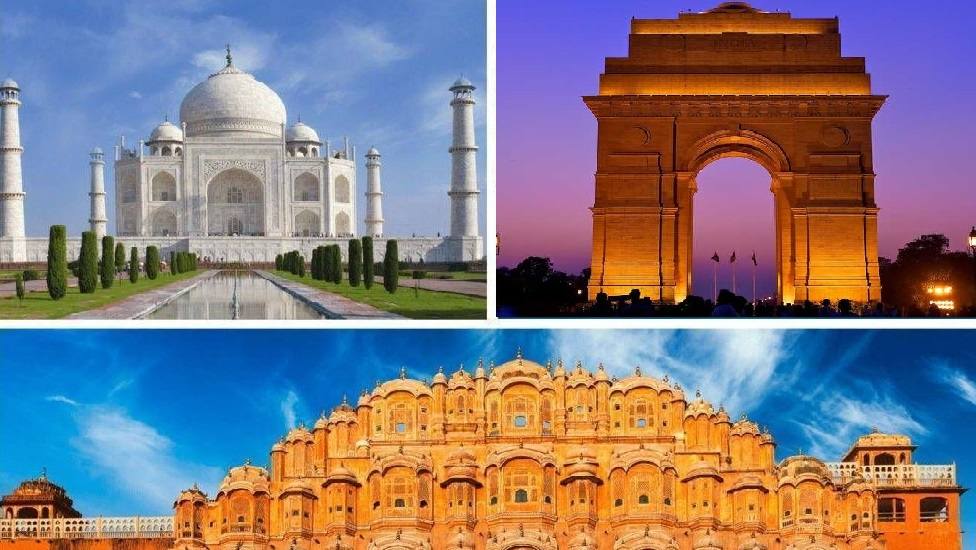India’s famed Golden Triangle circuit offers a compelling glimpse into the country's architectural splendor, cultural legacy, and historical richness. The route connects Delhi, Agra, and Jaipur—each city home to iconic landmarks that captivate international visitors. Below is an informative guide to the must-see monuments that define the Golden Triangle experience.
India Gate, Delhi
India Gate stands as a powerful war memorial in the heart of New Delhi. Designed by Sir Edwin Lutyens, this 42-meter archway commemorates the soldiers of the British Indian Army who lost their lives during World War I. The monument’s grandeur is enhanced by the Amar Jawan Jyoti, an eternal flame that burns in memory of the unknown soldiers. The surrounding lawns make it a peaceful spot for reflection, and evening illuminations draw both locals and visitors alike. It’s a starting point that introduces foreign travelers to the fusion of colonial and contemporary India.
Qutub Minar, Delhi
A UNESCO World Heritage Site, the Qutub Minar is an extraordinary example of Indo-Islamic architecture. At 72.5 meters, it is the tallest brick minaret in the world. The tower is adorned with intricate carvings and verses from the Quran, reflecting the artistry of the 12th century. International tourists are often fascinated by the structure’s five distinct storeys and the Iron Pillar in its courtyard, which has withstood corrosion for over 1,600 years. The complex offers insights into the early Islamic rule in India and the craftsmanship of that era.
Taj Mahal, Agra
No Golden Triangle journey is complete without witnessing the ethereal beauty of the Taj Mahal. Built by Mughal Emperor Shah Jahan in memory of his wife Mumtaz Mahal, this white marble mausoleum is globally celebrated as a symbol of eternal love. The symmetry, delicate inlay work, and surrounding gardens make it a masterpiece of Mughal architecture. The changing hues of the Taj Mahal at dawn, noon, and dusk enchant foreign tourists, offering an unforgettable visual experience.
Agra Fort, Agra
Agra Fort, another UNESCO World Heritage Site, presents a rich tapestry of Mughal history. This 16th-century fortress served as the main residence of the emperors until Delhi’s Red Fort took its place. With its massive walls, intricate palaces, audience halls, and mosques, Agra Fort provides visitors with a deeper understanding of Mughal military power and royal life. Highlights include the Diwan-i-Aam (Hall of Public Audience) and the Diwan-i-Khas (Hall of Private Audience).
Amber Fort, Jaipur
Perched on a hilltop overlooking Maota Lake, Amber Fort is a striking blend of Rajput and Mughal architecture. The fort complex, built of red sandstone and marble, houses lavish palaces, temples, and courtyards. The Sheesh Mahal (Mirror Palace) is particularly admired for its intricate mirror work that sparkles under minimal light. International visitors often enjoy the panoramic views of the surrounding Aravalli hills and the fort’s impressive defensive structures.
Hawa Mahal, Jaipur
Hawa Mahal, or the Palace of Winds, is perhaps Jaipur’s most photographed structure. Built in 1799 by Maharaja Sawai Pratap Singh, this five-storey façade features 953 small windows, or jharokhas, designed to allow royal women to observe street festivals without being seen. The delicate latticework and the pink sandstone exterior create a visually striking monument that embodies the essence of Jaipur’s architectural style. Visitors appreciate its unique purpose and artistic design, which speak volumes about the era’s royal traditions.
City Palace, Jaipur
City Palace is a sprawling complex of courtyards, gardens, and buildings that offers international visitors an immersive experience into Jaipur’s royal past. The architecture reflects a harmonious blend of Mughal and Rajput styles. Inside, museums showcase royal costumes, armory, and artifacts, helping visitors gain insight into the history and lifestyle of Jaipur’s rulers. The Mubarak Mahal and Chandra Mahal are among the palace’s standout features.
Exploring Beyond the Triangle
Many international tourists extend their journey beyond the classic route. For example, the Golden Triangle Tour With Ranthambore offers the added excitement of wildlife safaris in one of India’s premier tiger reserves. Meanwhile, those seeking spiritual depth often opt for the Golden Triangle Tour with Varanasi, which adds the sacred city of Varanasi to the itinerary, allowing for a profound cultural experience on the banks of the Ganges.
Final Thoughts
The Golden Triangle’s monuments tell stories of empires, art, and enduring traditions. For those eager to delve deeper into this iconic route, the Golden Triangle Tour provides a structured journey through these historical wonders. Each site offers unique insights into India’s rich heritage, ensuring a memorable experience for international travelers.
